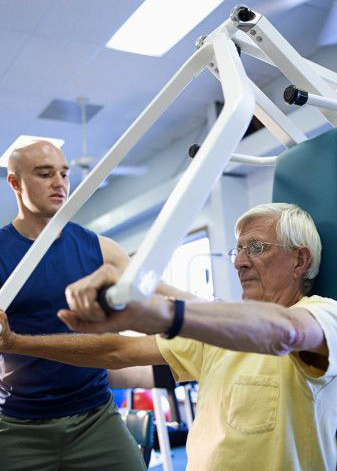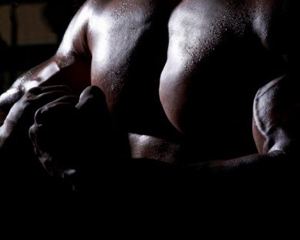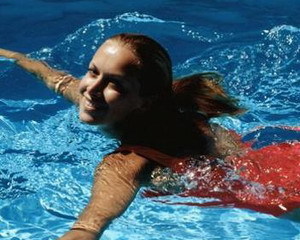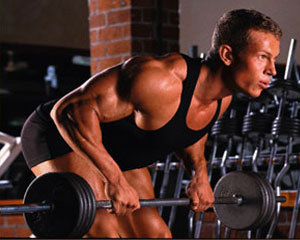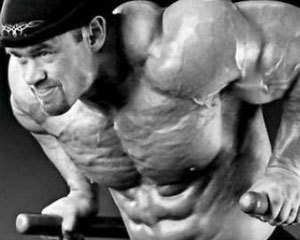BUILDING ON A TURNIK
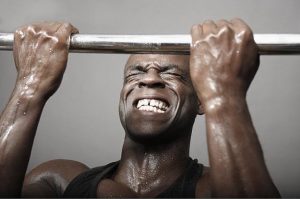 One of the favorite exercises of Arnold Schwarzenegger, pull-ups on the horizontal bar, fraught with great potential. Many bodybuilders are not casual attributed pull-ups to basic exercises. The value of the pull-ups is that they, like the basic exercises, use simultaneously many muscle groups, perfectly working through the middle and upper back.
One of the favorite exercises of Arnold Schwarzenegger, pull-ups on the horizontal bar, fraught with great potential. Many bodybuilders are not casual attributed pull-ups to basic exercises. The value of the pull-ups is that they, like the basic exercises, use simultaneously many muscle groups, perfectly working through the middle and upper back.
But all that is needed for pull-ups is the usual horizontal bar or crossbar, which is not only in any gym, but also on the street in courtyards and athletic fields.
Equipment
The technique of performing pull-ups is very simple and accessible to absolutely everyone. The theory is simple: the wider the grip, the greater the load placed on the latissimus dorsi muscles; the narrower – the more stress falls on the pectoral muscles.
If you pull up, touching the crossbar head, the latissimus muscles stretch in width. And if you pull up, touching your chin, then the broadest stretch more and in thickness. With a narrow grip, palms themselves, the lower load, which is in the region of the waist, the part of the broadest, receives additional load.
Pull up on the horizontal bar should be smoothly, without jerks, at a comfortable pace. Also, do not throw the body down. When the body is at the lowest point, the arms should be fully extended. Do not forget about breathing: go down – inhale; pull out – exhale.
Pull-ups should not be performed before touching the crossbar with the nape. This greatly reduces the amplitude of movement, respectively, the muscles work less. In addition, it is traumatic. The shoulder joint is physiologically adapted to move the arm in the front hemisphere, and forcing it to work at the border, and especially behind it, is dangerous. When at the end point the head and chest move forward and the elbows back, the shoulder joint is in an unnatural position, which makes it very vulnerable.
The benefits of pull-ups on the bar
As we have already said, pull-ups, in addition to the broadest muscles, develop large, round and rhomboid muscles, stretch the biceps and forearm muscles, and strengthen the hands. During tightening, the biceps gets a good stretch, especially in the area of the elbow joint, which is most often a problem for many athletes. In addition, the biceps gets a great development in width, acquiring a neat and balanced shape.
It is very useful when doing bench presses or dumbbells while lying, between the approaches to perform light pull-ups on the horizontal bar. So, with the alternation of bench presses and pull-ups, antagonist muscles are loaded, which contributes to their better joint development, and also stretches the chest muscles.
Pull-ups on the horizontal bar (and push-ups from the floor) may well replace a full-fledged workout when there is no time for it, or an opportunity, say, when there is no gym nearby, and you have a workout according to plan.
pull-ups
Types of pull-ups
Consider the main types of pull-ups, focusing on the technique of exercise and the developed muscle groups.
Wide grip to the chest
It is one of the most difficult exercise options in terms of proper technique.
Technique: Wide grip. When tightening, it is necessary to breast touch the crossbar, maximally reducing the shoulder blades and relaxing the biceps. Necessary deflection in the back. After a short pause at the top point, return to the starting position.
Working muscles: the top of the broadest, round, subspacial and trapezius muscles.
Wide grip on the head
Traumatic option. If the mobility of your shoulder joints leaves much to be desired, do not abuse this option of pull-ups to avoid injuries.
Technique: Wide grip. When pulling up your body should be strictly perpendicular to the floor. Elbows pointing down clearly.
Working muscles: the top and middle of the broadest, round, sub-axial and trapezius muscles.
Medium straight grip
The traditional version of pull-ups.
Technique: Grip shoulder width. When tightening, try to touch the crossbeam with your chest, reducing the shoulder blades. At the lowest point, stretch yourself as much as possible, straightening your arms completely.
Working muscles: muscles of the back and flexors of the forearm.
Average reverse grip
A light version of the previous exercise, because hand flexors take on most of the load.
Technique: Grip shoulder width, palm on yourself. When tightening, try to touch the crossbeam with your chest, reducing the shoulder blades. At the beginning of the movement, try to move the shoulders back down.
Working muscles: the broadest muscles, biceps.
Partial pull-ups with medium reverse grip
This kind of pull-ups will make your shoulders work.
Technique of performance: Reverse grip and pull up exactly to half. In this position, the body is fixed at a right angle to the floor and bending the arms, try to bring the clavicle as close as possible to the crossbar.
Working muscles: biceps muscle of the shoulder.
Narrow straight grip
If you have problems with the mobility of the wrist joints, then this type of tightening will be quite easy for you to perform.
